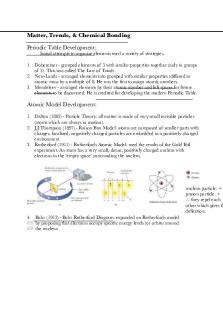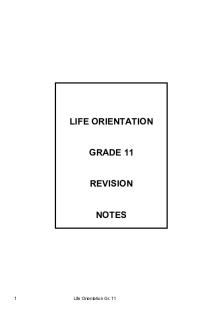11. Dela Llano vs. Biong, GR No. 182356 PDF

| Title | 11. Dela Llano vs. Biong, GR No. 182356 |
|---|---|
| Course | JD Law |
| Institution | New Era University |
| Pages | 3 |
| File Size | 79.3 KB |
| File Type | |
| Total Downloads | 298 |
| Total Views | 724 |
Summary
DRA. LEILA DELA LLANO vs. REBECCA BIONG GR No. 182356, December 4, 2013; J. BrionFACTS On March 30, 2000, at around 11:00 p., Juan dela Llana was driving a 1997 Toyota Corolla car along North Avenue, Quezon City. His sister, Dra. dela Llana, was seated at the front passenger seat while a certain Ca...
Description
DRA. LEILA DELA LLANO vs. REBECCA BIONG GR No. 182356, December 4, 2013; J. Brion FACTS
On March 30, 2000, at around 11:00 p.m., Juan dela Llana was driving a 1997 Toyota Corolla car along North Avenue, Quezon City. His sister, Dra. dela Llana, was seated at the front passenger seat while a certain Calimlim was at the backseat. Juan stopped the car across the Veterans Memorial Hospital when the signal light turned red. A few seconds after the car halted, a dump truck suddenly rammed the car’s rear end, violently pushing the car forward. Due to the impact, the car’s rear end collapsed and its rear windshield was shattered. Glass splinters flew, puncturing Dra. dela Llana. Apart from these minor wounds, Dra. dela Llana did not appear to have suffered from any other visible physical injuries.
In the first week of May 2000, Dra. dela Llana began to feel mild to moderate pain on the left side of her neck and shoulder. The pain became more intense as days passed by. Her injury became more severe. Her health deteriorated to the extent that she could no longer move her left arm.Dra. Dela Llana needed to undergo operation of her spine and neck due to severe pain. The operation released the impingement of the nerve, but incapacitated Dra. dela Llana from the practice of her profession since June 2000 despite the surgery.
Dra. dela Llana demanded from Rebecca compensation for her injuries, but Rebecca refused to pay. Dra. dela Llana sued Rebecca for damages before the Regional Trial Court of Quezon City (RTC). She alleged that she lost the mobility of her arm as a result of the vehicular accident.
In defense, Rebecca maintained that Dra. dela Llana had no cause of action against her as no reasonable relation existed between the vehicular accident and Dra. dela Llana’s injury. She pointed out that Dra. dela Llana’s illness became manifest one month and one week from the date of the vehicular accident. As a counterclaim, she demanded the payment of attorney’s fees and costs of the suit.
Rebecca testified that Dra. dela Llana was physically fit and strong when they met several days after the vehicular accident. She also asserted that she observed the diligence of a good father of a family in the selection and supervision of Joel. She pointed out that she required Joel to submit a certification of good moral character as well as barangay, police, and NBI clearances prior to his employment. She also stressed that she only hired Primero after he successfully passed the driving skills test conducted by Alberto Marcelo, a licensed driver-mechanic.
RTC: The RTC ruled in favor of Dra. dela Llana and held that the proximate cause of Dra. dela Llana’s whiplash injury to be Joel’s reckless driving.
CA: the CA reversed the RTC ruling. It held that Dra. dela Llana failed to establish a reasonable connection between the vehicular accident and her whiplash injury by preponderance of evidence.
ISSUE Whether Joel’s reckless driving is the proximate cause of Dra. dela Llana’s whiplash injury
RULING NO. Dra. dela Llana failed to establish her case by preponderance of evidence. Article 2176 of the Civil Code provides that "[w]hoever by act or omission causes damage to another, there being fault or negligence, is obliged to pay for the damage done. Such fault or negligence, if there is no pre-existing contractual relation between the parties, is a quasi-delict." Under this provision, the elements necessary to establish a quasi-delict case are: (1) damages to the plaintiff; (2) negligence, by act or omission, of the defendant or by some person for whose acts the defendant must respond, was guilty; and (3) the connection of cause and effect between such negligence and the damages. These elements show that the source of obligation in a quasi-delict case is the breach or omission of mutual duties that civilized society imposes upon its members, or which arise from noncontractual relations of certain members of society to others. Based on these requisites, Dra. dela Llana must first establish by preponderance of evidence the three elements of quasi-delict before we determine Rebecca’s liability as Joel’s employer. She should show the chain of causation between Joel’s reckless driving and her whiplash injury. Only after she has laid this foundation can the presumption - that Rebecca did not exercise the diligence of a good father of a family in the selection and supervision of Joel - arise. Once negligence, the damages and the proximate causation are established, this Court can then proceed with the application and the interpretation of the fifth paragraph of Article 2180 of the Civil Code. Under Article 2176 of the Civil Code, in relation with the fifth paragraph of Article 2180, "an action predicated on an employee’s act or omission may be instituted against the employer who is held liable for the negligent act or omission committed by his employee." The rationale for these graduated levels of analyses is that it is essentially the wrongful or negligent act or omission itself which creates the vinculum juris in extra-contractual obligations. In civil cases, a party who alleges a fact has the burden of proving it.He who alleges has the burden of proving his allegation by preponderance of evidence or greater weight of credible evidence.The reason for this rule is that bare allegations, unsubstantiated by evidence, are not equivalent to proof. In short, mere allegations are not evidence. In the present case, the burden of proving the proximate causation between Joel’s negligence and Dra. dela Llana’s whiplash injury rests on Dra. dela Llana. She must establish by preponderance of evidence that Joel’s negligence, in its natural and continuous sequence, unbroken by any efficient intervening cause, produced her whiplash injury, and without which her whiplash injury would not have occurred. Notably, Dra. dela Llana anchors her claim mainly on three pieces of evidence: (1) the pictures of her damaged car, (2) the medical certificate dated November 20, 2000, and (3) her testimonial evidence. However, none of these pieces of evidence show the causal relation between the vehicular accident and the whiplash injury. In other words, Dra. dela Llana, during trial, did not adduce the factum probans. Indeed, a perusal of the pieces of evidence presented by the parties before the trial court shows that Dra. Dela Llana did not present any testimonial or documentary evidence...
Similar Free PDFs

DELA CRUZ VS PEOPLE
- 1 Pages

Gr.11 Chemistry - Unit 1
- 10 Pages

Gr.11 Chemistry - Unit 2
- 3 Pages

Gr.11 chemisty - unit 5 gases
- 7 Pages

GR&RT - Estudio GR&R
- 3 Pages

Unit 4 Solutions - Gr.11 chem
- 13 Pages

Lecture No 11
- 7 Pages

Transformacion dela forma
- 2 Pages

Lesley Dela Cruz Cleaners
- 6 Pages
Popular Institutions
- Tinajero National High School - Annex
- Politeknik Caltex Riau
- Yokohama City University
- SGT University
- University of Al-Qadisiyah
- Divine Word College of Vigan
- Techniek College Rotterdam
- Universidade de Santiago
- Universiti Teknologi MARA Cawangan Johor Kampus Pasir Gudang
- Poltekkes Kemenkes Yogyakarta
- Baguio City National High School
- Colegio san marcos
- preparatoria uno
- Centro de Bachillerato Tecnológico Industrial y de Servicios No. 107
- Dalian Maritime University
- Quang Trung Secondary School
- Colegio Tecnológico en Informática
- Corporación Regional de Educación Superior
- Grupo CEDVA
- Dar Al Uloom University
- Centro de Estudios Preuniversitarios de la Universidad Nacional de Ingeniería
- 上智大学
- Aakash International School, Nuna Majara
- San Felipe Neri Catholic School
- Kang Chiao International School - New Taipei City
- Misamis Occidental National High School
- Institución Educativa Escuela Normal Juan Ladrilleros
- Kolehiyo ng Pantukan
- Batanes State College
- Instituto Continental
- Sekolah Menengah Kejuruan Kesehatan Kaltara (Tarakan)
- Colegio de La Inmaculada Concepcion - Cebu






